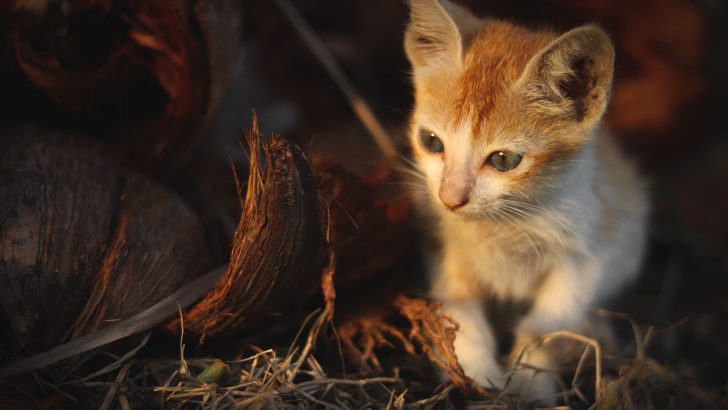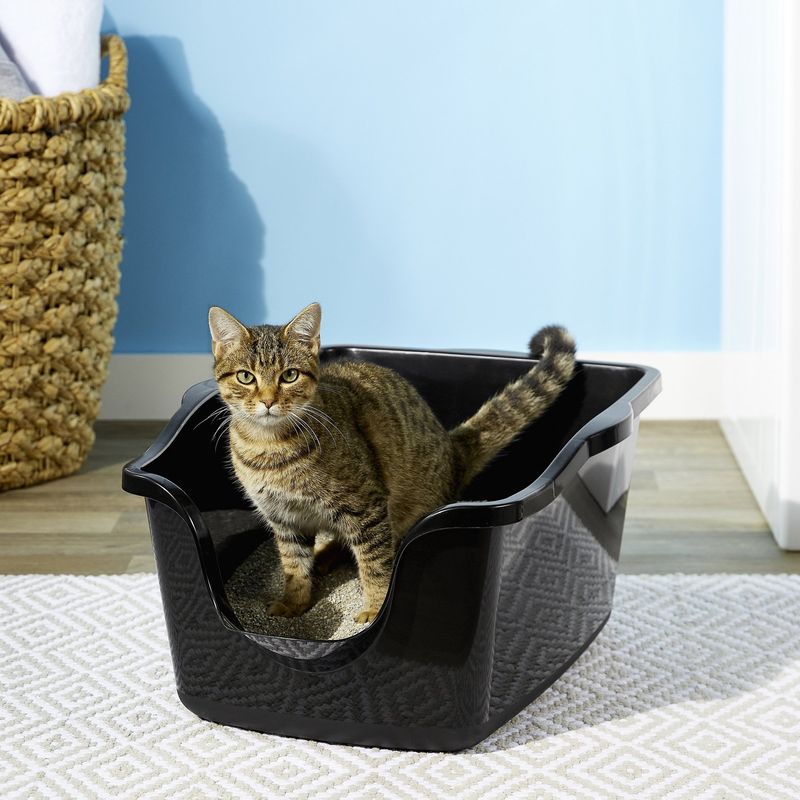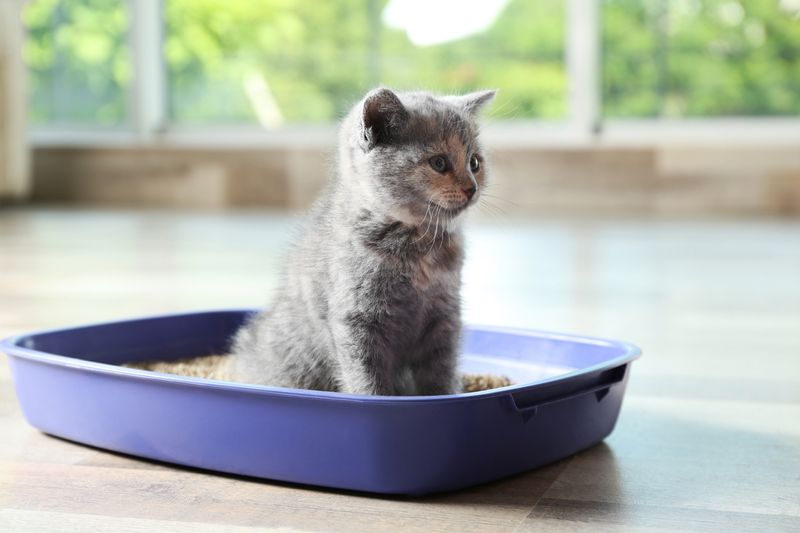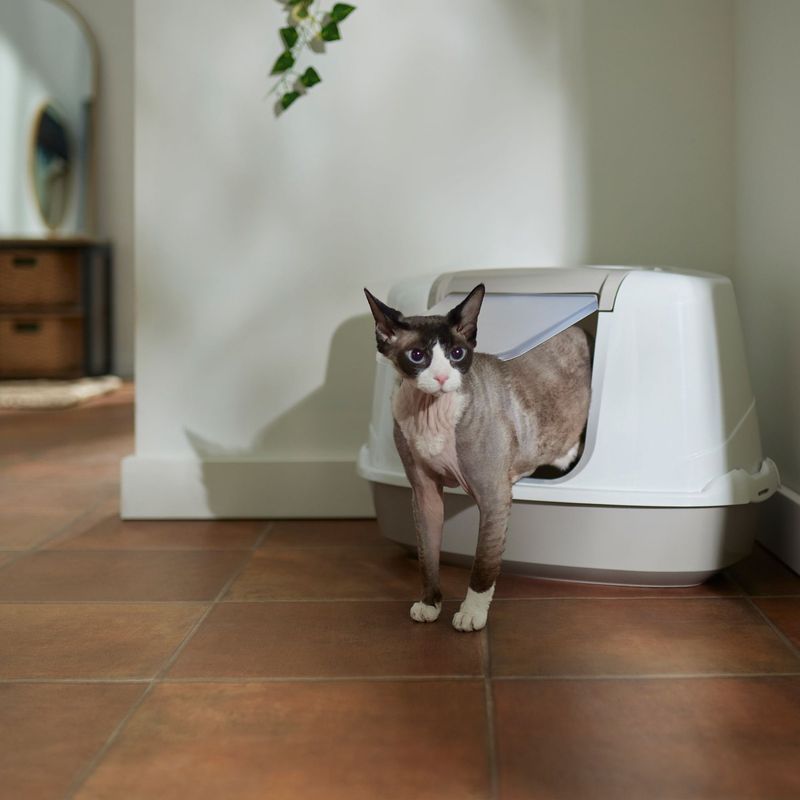“Wood shavings for cat litter? What?!” Before you say anything you might regret, we’re thinking of your future and the chance of you reducing your pet’s carbon pawprint. Don’t get me wrong, there’s nothing better than having a pet to share your life with. But, maybe there are better ways to do that.
What do we mean by that? Of course, you love your pet to death. Whether she makes you laugh because she doesn’t know how to walk or because she keeps stealing your socks, she makes your life better.
Even though she’s the best thing that happened to you, she might not be the best thing that happened to the planet. We can’t overlook the fact that owning a pet comes with environmental consequences.
Meat-based pet foods (Fancy Feast, we’re looking at you) tend to be bad for the environment because of deforestation. Pet food pouches made of plastic create waste (even when you do your best to recycle them). Litter that’s not biodegradable ends up somewhere within the landfills.
Therefore, there’s no reason why you shouldn’t be concerned about your cat’s (adorable, but dangerous) carbon pawprint. And, using wood shavings for cat litter might be a great way to start. There are so many different ways to reduce your cat’s waste. And, her litter box appears to be an appropriate kickoff.
1. Shredded Newspapers
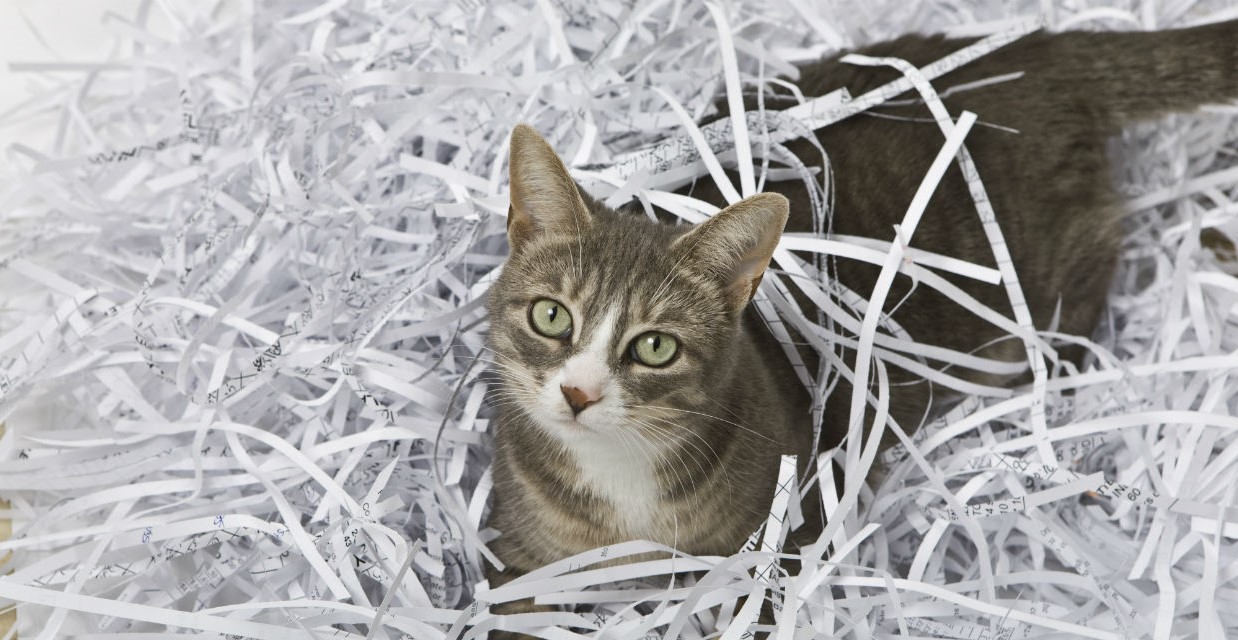
First off, we’re aware that people don’t read actual newspapers anymore which means they don’t have the same problem of “where do we store these after we read them” that we did back then. But, you can’t say you don’t have old brochures, notebooks, and random paper things lying around (even paper bags count!).
Whatever type of paper you have, you can use it as a substitute for litter. Maybe you have a paper shredder. Perhaps you’re relying on your scissors to do most of the work. Make sure you make the smallest paper pieces possible to mimic that feeling of fresh litter. However, one of the downsides of using paper as litter has to be the fact that paper gets soggy after a while. And, that means that you might need to secure endless supplies of shredded paper. That way you can change the “litter” the moment your cat finishes doing her business.
2. Sawdust
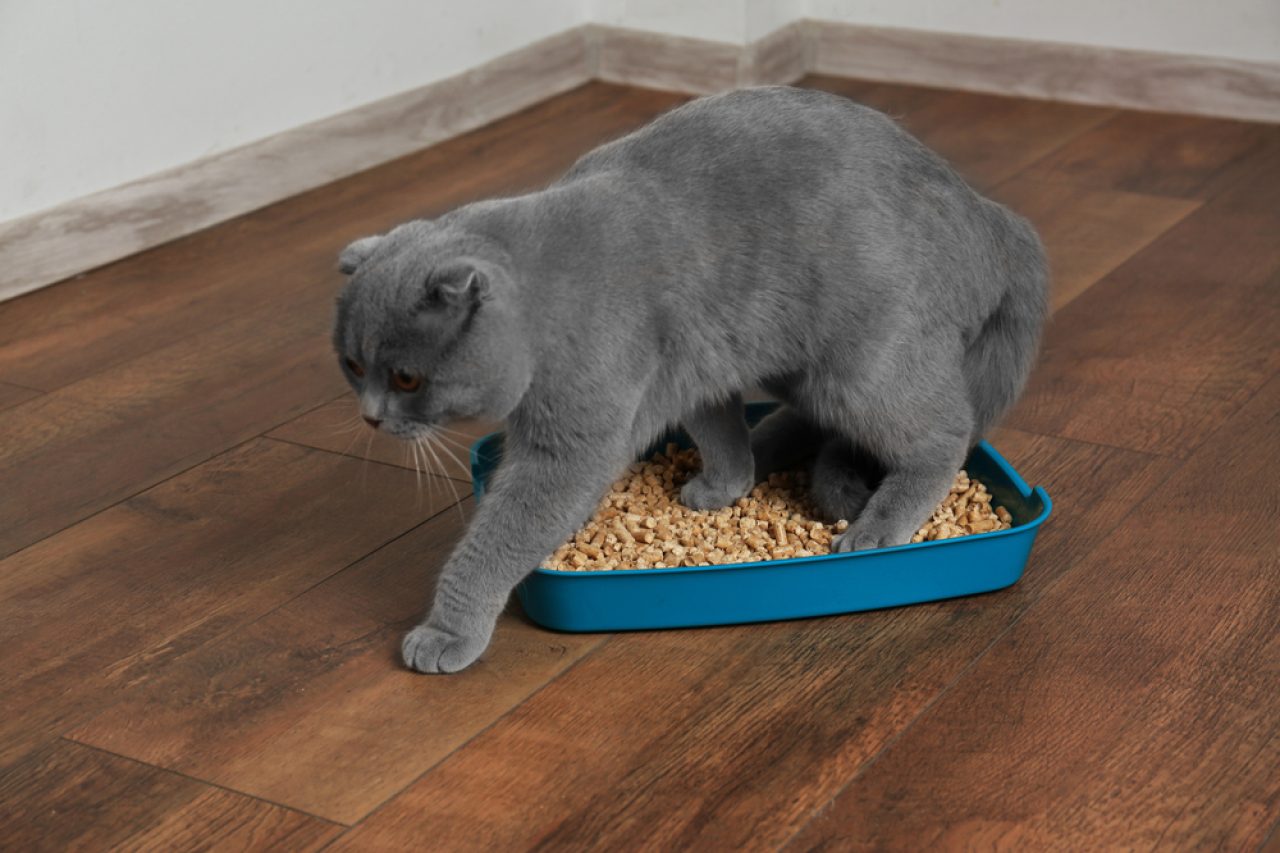
Another wood-based product you can use as an alternative to cat litter! Sawdust stays on the ground when you’re done sawing sanding, milling, planing, and routing. Sawdust appears to be similar to wood shavings. But (unlike wood shavings), sawdust’s smaller and even easier to come by. Whether you can get a sack from a woodworking shop. Whether you collect the waste yourself. You’re bound to save some money and save the planet by getting a product that doesn’t come wrapped with tons and tons of plastic.
And, you can even find considerable amounts of sawdust when you walk through the forest. Some animals, birds, and insects munch on the wood and leave the dust behind. Before you head off to the nearest forest, know that sawdust can be a bit of a health hazard for both you and your pet. Sawdust happens to be a known cancerogenic for humans, which means the same thing could be dangerous to cats, too. To make sure you’re doing the right thing, always opt for wood shavings (if you can).
3. Wood Pellets

Besides using wood shavings for cat litter, wood pellets might be an even better option. As a matter of fact, wood pellets are made from compressed wood fiber and are used for heating and cooking (when you don’t have charcoal, firewood, oil, or gas at your disposal). Wood pellets are soft, lightweight, and comfortable under your cat’s bottom. And, to make things better, most homes already have wood pellets because they have become quite popular over time.
Even when you don’t have them at home, you can easily find them at home improvement and hardware stores. Advantages of using wood pellets as cat litter – they’re absorbent and have a great scene. They can easily mask the smell of your cat’s pee or poop, and they’re pretty easy to come by. Disadvantages of using wood pellets – they can contain chemicals that could cause harm to your cat. Make sure you’re using the 100% natural kind.
4. Poultry Feed
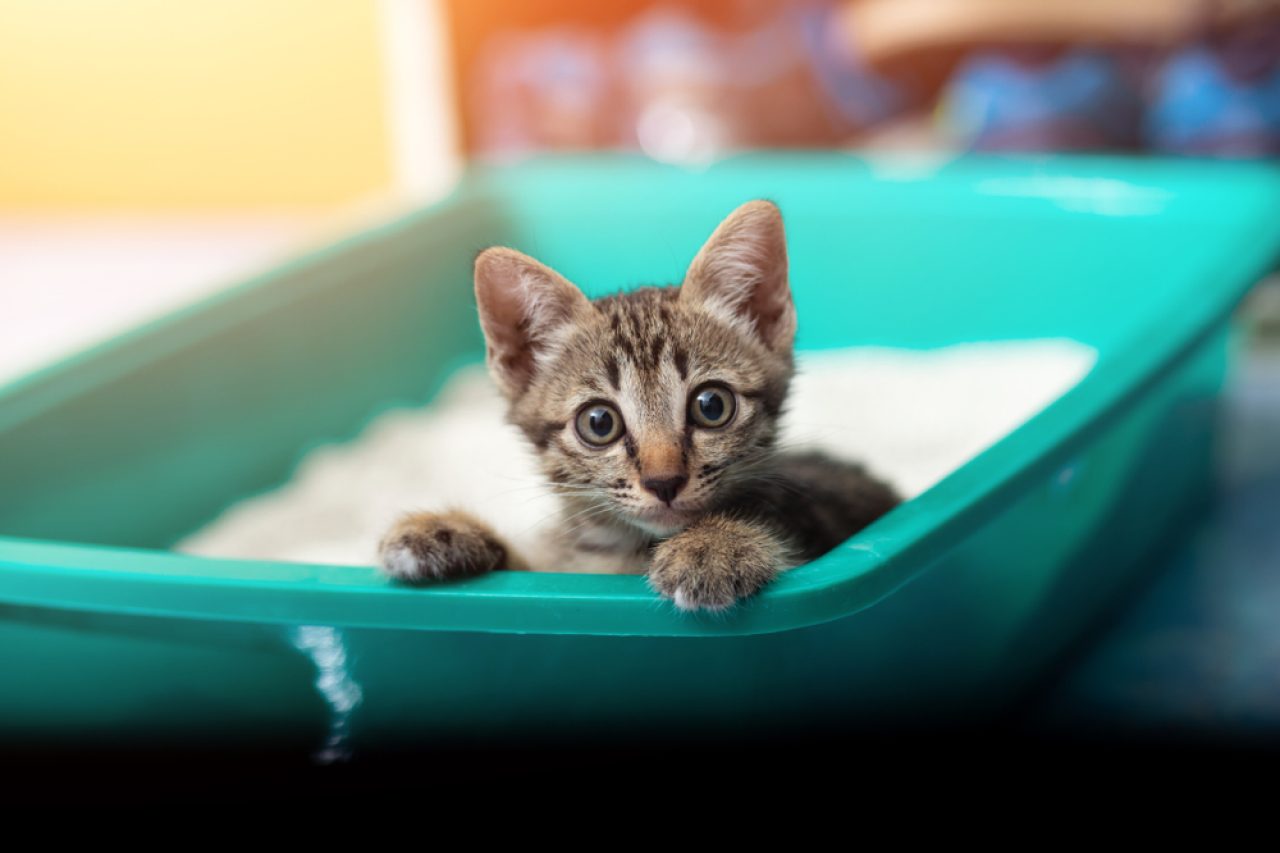
Chicken feed sounds like something your cat might be tempted to eat, right? However, some pet parents swear by the fact that poultry feed helps them save money and keep the house smelling fresh. Other than wood shavings, feed does seem to be a great alternative to cat litter (if you happen to keep chicken or other farm animals at home). Of course, when we look at what’s needed for average chicken feed, we can see cereal grains, cereal byproducts, fats and oils, protein, a bunch of raw ingredients, minerals and vitamins, and feed additives.
Now, you can combine regular poultry feed with baking soda and wood shavings to create your own version of sustainable cat litter. Or, you can purchase the type of poultry feed that’s already shaped like little wood pellets and use that without adding anything. But, be weary of mice and other crawling creatures – they sure love to munch on these.
5. Sand
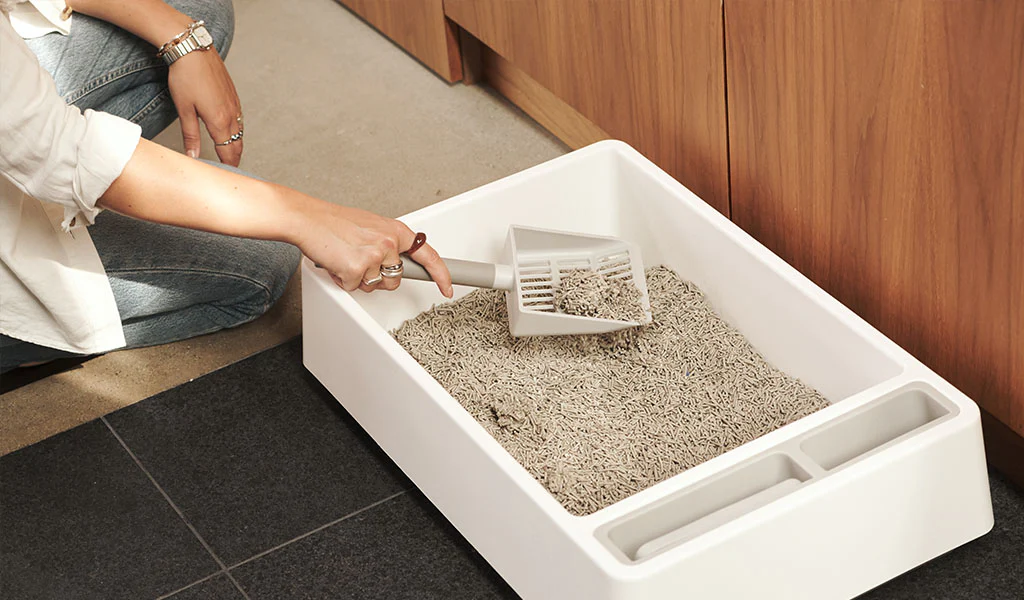
Argh, there’s no way of knowing how many times my Maine Coon’s peed inside my children’s sandbox while nobody was looking! And, she wasn’t even trying to hide the fact she did a naughty thing. She made sure to dig through the toys and sniff to check whether she marked her territory the right way. However, sand does seem to make a decent litter substitute (though, we can’t promise you won’t spend a lot of money).
First things first, you can buy sand at most hardware or landscaping stores. Or, you can go to the beach and help yourself to some of that “free” litter. And, you can add a little bit of baking soda to help with those odors. Don’t forget, though – sand can become the worst decision you ever made because it gets everywhere. Put a rubber mat or something of the sort under the litter box to make cleaning a little easier. Or, place the litter box someplace you don’t mind getting messy.
6. Soil

Keeping up with the most natural cat litter substitutes, potting soil might be even better than wood shavings for your cat (and the planet). Chances are, you’ve seen your cat do her business outside more times than you can count. Cats don’t mind peeing or pooping outside because they can dig through the soil, do whatever they need to do, and hide the evidence. Therefore, you can use potting soil as an alternative to litter.
That’s a great way to save up some money because you can use the soil you already have, or purchase little sacks of soil that typically don’t cost that much. That being said, soil can get pretty much everywhere (not to mention the mess it can make when it gets wet). The best thing to do would be to place the litter box on the porch or in the laundry room (at least during the warmer months) to ensure your home stays mess-free.
7. Homemade Litter

Who would’ve thought Dawn dish soap would come to the rescue? Here’s the thing, most pet parents prefer the clumping type of litter because it’s easier to deal with and clean. However, most alternatives we talked about don’t necessarily do that when your cat pees on them. Actually, they create even more chaos. According to a bunch of cat magazines, you can make regular cat litter out of newspaper, water, dish soap, and baking soda. Here’s how you can do that.
Shred the paper and add some water and dish soap (to make a soggy mess). Repeat the process of rinsing and draining the water a couple of times. Add a sprinkle of baking soda, crumble the paper, and let everything dry. At last, the consistency should resemble that of regular litter.
8. Regular (Human) Toilet
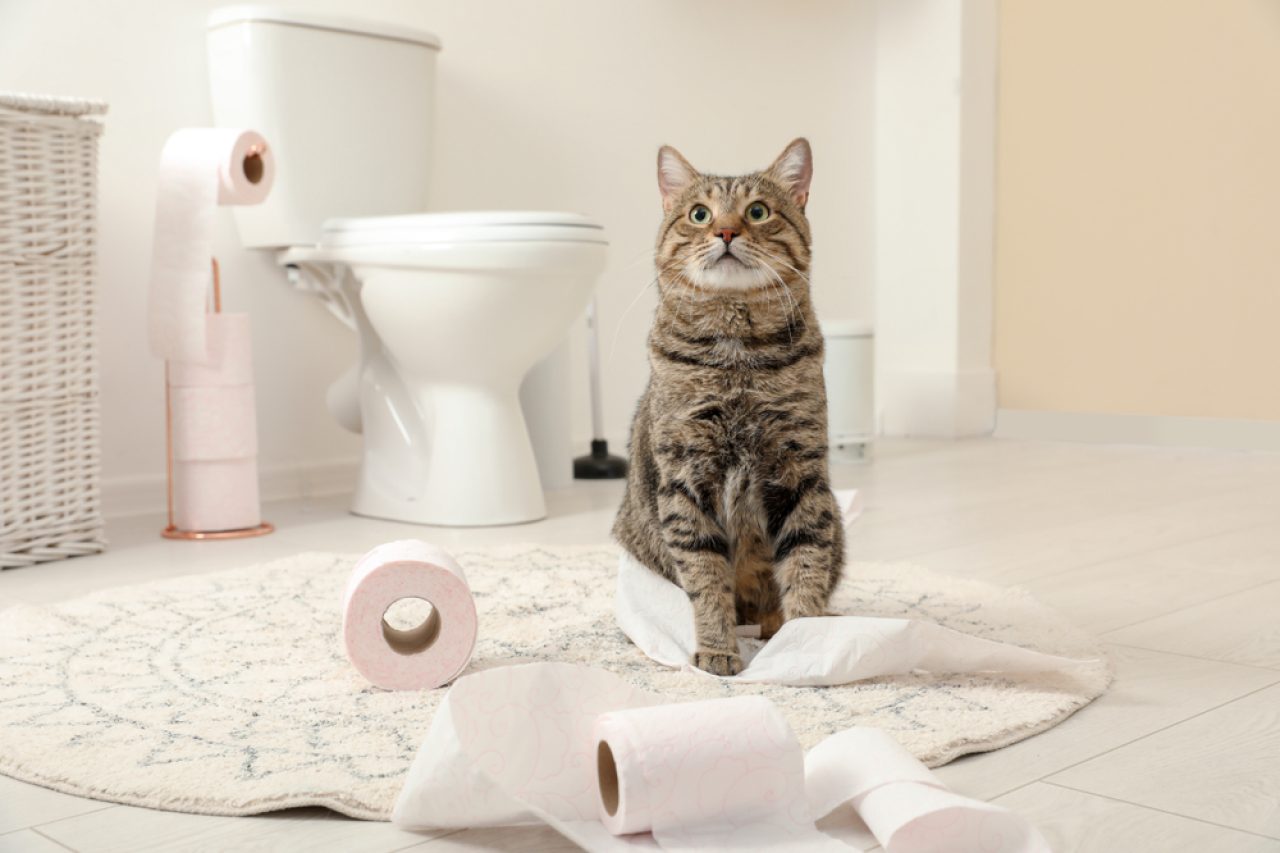
Wood shavings might work for cat litter. But, wouldn’t you prefer teaching your cat how to use your toilet? Come on, you wouldn’t have to worry about litter polluting your house (and the planet) anymore. Cat toilet training has been blowing up on TikTok as of late, resulting in a bunch of companies creating toilet training kits. With these kits, you get numerous toilet-shaped trays and flushable litter.
When you start training your cat, you place the first tray with litter on your toilet and encourage her to go potty there. Each tray becomes more and more challenging. But once she goes through them, she’s going to learn how to use the toilet on her own. Whichever alternative you decide to go for, your wallet, your cat, and the planet are bound to be filled with gratitude. Good luck!
9. Coconut Husk
Coconut husks, often discarded after the fruit is harvested, can be repurposed as an effective cat litter. Their natural absorbency helps manage moisture, keeping the litter box dry. Additionally, coconut husks are eco-friendly, as they decompose quickly, making them a sustainable choice.
Incorporating coconut husks into your cat litter routine is not only environmentally friendly but also economical. These husks are often available at low cost, especially in regions where coconuts are abundant. Opting for coconut husks supports renewable resources, providing a healthier alternative for your cat and the planet.
10. Corn Cob
Made from corn cobs, a byproduct of the corn industry, this biodegradable litter offers excellent odor control and high absorbency. The cobs’ gentle texture makes it a comfortable choice for your cat’s paws.
Using corn cobs helps in reducing agricultural waste, aligning with sustainable living practices. This option also supports farmers by creating additional revenue from what would otherwise be discarded. Corn cob litter is lightweight, making it easy to handle and change regularly. Consider this option for an eco-friendly, efficient cat litter solution.
11. Paper Pellets
Crafted from recycled paper, paper pellets provide an eco-conscious choice for cat litter. Their high absorbency tackles moisture efficiently, keeping the litter box environment pleasant.
These pellets are soft, minimizing dust and reducing the risk of respiratory issues for both cats and owners. Using recycled materials supports sustainability efforts, diverting waste from landfills. Adopting paper pellets as cat litter promotes a circular economy, emphasizing the importance of recycling. This choice is practical and gentle on the environment, offering a responsible solution for conscientious pet owners.
12. Pine Needles
Naturally shed in forests, pine needles present a unique and aromatic alternative for cat litter. Their natural fragrance helps mask odors, offering a fresh-smelling environment. This biodegradable choice decomposes easily, minimizing environmental impact. Pine needles are soft on a cat’s paws and can be sourced without harming trees, promoting ecological balance.
Using pine needles supports forest health by utilizing natural, renewable materials. This sustainable option encourages a connection with nature while providing an efficient litter solution for your feline friends.
13. Grass Seed
Often overlooked, grass seed can be used as a sustainable cat litter alternative. Its absorbent properties keep the litter box dry, preventing odors effectively.
Grass seed is gentle on cats’ paws, encouraging regular use of the litter box. This renewable resource requires little processing, making it an environmentally friendly choice. Choosing grass seed as a cat litter option supports sustainable practices, as grass grows abundantly and is easily replenished. This eco-conscious choice benefits both your household and the environment, offering a practical solution for cat owners.
14. Wood Shavings
Wood shavings remain a popular choice for cat litter due to their natural absorbency and pleasant scent. Sourced from various types of wood, these shavings offer an organic solution that controls odors effectively. Being biodegradable, wood shavings decompose naturally, reducing environmental impact. Their soft texture is gentle on cats’ paws, ensuring comfort during use.
Selecting wood shavings supports a sustainable cycle of using byproducts from the wood industry. This traditional option continues to appeal to pet owners seeking a natural litter solution, balancing practicality with eco-friendliness.
